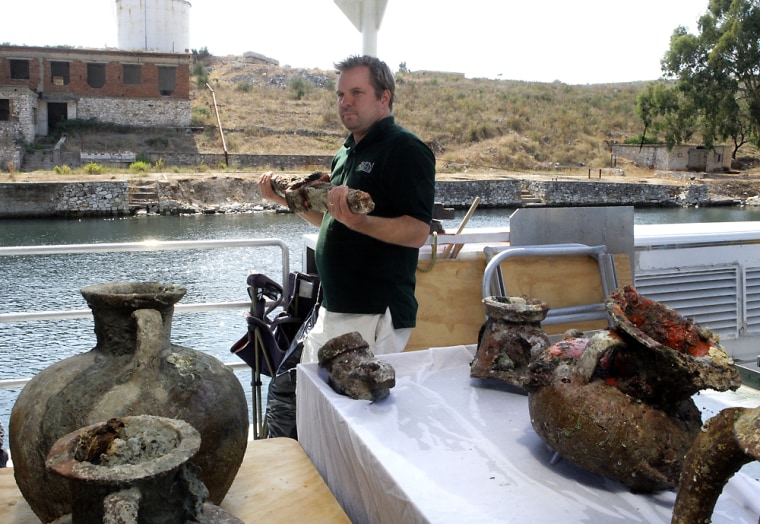Once Europe's most forbidding coast, this sparkling stretch of the Ionian Sea is slowly revealing lost treasures that date back 2,500 years and shipwrecks from ancient times.
Over the past two summers, a research ship carrying U.S. and Albanian experts has combed the waters off southern Albania inch by inch, using scanning equipment and submersible robots to seek ancient wrecks. In what organizers say is the first archaelogical survey of Albania's seabed, at least five sites were located, which could fill in blanks on ancient shipbuilding techniques.
The project would not have been even imaginable just 18 years ago, when the small Balkan country was still ruled by Communists who banned contact with the outside world. The brutal regime pockmarked the countryside with more than 700,000 bunkers, against a foreign invasion that never came. Instead, the Communists were toppled after a student-led revolt in 1990, which opened Albania to the world.
"Albania is a tremendous untapped (archaeological) resource," said U.S. archaeologist Jeffrey G. Royal from the Key West, Fla.based RPM Nautical Foundation, a nonprofit group leading the underwater survey. "With what we've discovered until now we may say that Albania is on a par with Italy and Greece."
The latest expedition has revealed traces of four sunken Greek ships dating from the 6th to the 3rd centuries B.C., while another three suspected sites have still to be verified. In comparison, the 2007 season netted signs of just one ancient wreck.
"The discoveries are very important because of the lack of properly documented objects from that period," said Andrej Gaspari, a leading Slovenian underwater archaeologist who was not involved in the project. "The only ships found and documented from that time belong to the Western Mediterranean and Israel ... so our knowledge on the technology used for construction of ships is more or less limited."
During ancient times, Albania stood on an important trade route, receiving traffic from Greece, Italy, north Africa and the western Mediterranean. That history shows in what Albanian mission coordinator Auron Tare called "a real underwater treasure trove" discovered during the six-week season that ended in August 2008.
A 20-inch long pottery jar, or amphora, used to transport wine and olive oil, and a smaller version found 260 feet deep were probably made in the southern Greek city of Corinth, in the 6th or early 5th centuries B.C. Both were recovered from a merchant ship that sank 1.8 miles off shore. Albanian archaeologist Adrian Anastasi said if the 6th century B.C. dating is confirmed, it would be only the fifth of its kind found in the world.
Other highlights included a 4th century B.C. amphora and roof tiles, a north African jar from the 1st to 3rd centuries A.D. and a Roman stone ship's anchor of the 2nd-1st century B.C. The team, operating off the southern port city of Saranda, also located more than 20 unknown 20th-century shipwrecks.
Anastasi said what was unique in the 2008 season was the discovery of the fired clay tiles, which appeared to be part of an entire sunken shipload.
"A wreck with a whole shipload of tiles has never been found before," Anastasi said. "The number of tiles and the way they were lying clearly shows the ship is below them."
Anastasi said he had unearthed the same type of large tiles — which measure 29 by 20 inches — during excavations on land at the ruins of ancient cities in western Albania. He said the ship seemed to have been loaded on the nearby Greek island of Corfu and possibly foundered on its way to a Corinthian colony in Albania.
To protect the wrecks from looting, the team is keeping their precise sites secret.
"I'd say if all the material we discovered was excavated you would need a new museum to put it in," said mission leader George Robb. "We've scanned only 84 square miles until now."
Over the next five years, RPM and the Texas-based Institute of Nautical Archaeology plan to scan the whole 220-mile shore from the southern border with Greece to Montenegro in the north. Each day of work costs an estimated $25,000, covered by RPM funds.
Once the scanning project is finished, RPM and the INA will discuss the prospect of properly excavating the wrecks using robot submarines and divers, Tare said
